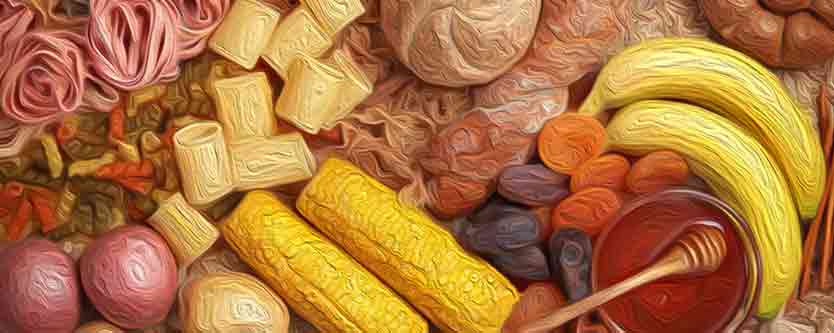Carbohydrates form an essential part of our diet. Some carbs are good for us while some are quite bad.
[the_ad id=”13371″]
It is vital to know the difference. Carbohydrates or carbs are molecules that contain the atoms of carbon, hydrogen and oxygen. From the nutrition point of view, they are one of the macronutrients apart from protein and fat.
Carbs cannot be avoided – they are the body’s primary source of energy. It is said that around 50% of our daily calories come from carbohydrates. It doesn’t mean you fill up on cakes and cookies. That’s why it’s important to know what are good (complex) carbs and what are bad (simple) ones. Some examples of Good Carbohydrates are:
Good Carbohydrates
Complex or good carbohydrates are those that require more time to get broken down. These provide you with minerals, fibres, nutrients and vitamins. They keep the blood sugar levels steady and make you feel less hungry. Few examples of Good Carbohydrates:
- Whole fruits like apple, banana, etc.
- Vegetables
- Brown Rice
- Seeds
- Nuts
- Oats
- Lentils
- Whole Grain Cereals
- Beans
Benefits of Good Carbohydrates:
- High in nutrients
- High in natural fiber
- Lower calorie count
Bad Carbohydrates
Simple carbohydrates are digested and absorbed quickly. Hence, if not used up immediately, they get converted to fat. These carbs are also low in nutrients and fibers. Few examples of Bad Carbohydrates:
- Candy
- Soda
- Syrups
- White Rice
- White Bread
- Sugar
- White Pasta
- Desserts
- Processed Products (chips, etc.)
Drawbacks of bad carbohydrates are:
- Low in nutrients
- Low in fiber
Glycemic Index
A newer system adopted by nutritionists and dieticians focuses more on how quickly or how slowly the carbs cause a rise in the blood sugar levels, called the Glycemic Index (GI). The foods with a lower GI are healthier and keep you feeling full longer.
The general rule for measurement:
- If the GI is 55 or less, it is on the lower side. Ex. Non-Starchy vegetables like cabbage, cucumber, tomatoes, etc. with serving size 1 cup, raw or cooked. Fruits like apple, mango, kiwi, most beans, etc., do check the serving size.
- If the GI is between 56 – 69, it is on the medium side
- If the GI is 70 and above, it is considered high
Examples of food and their glycemic index
- Brown rice: 50
- White basmati rice: 63
- Apple: ~36
- Kidney beans: 29
Do not base your diet solely on the GI, but use it as a guide, so you have a balance of simple and complex carbohydrates. Consult your dietician to customize the optimal carbs for your diet.
Source:

